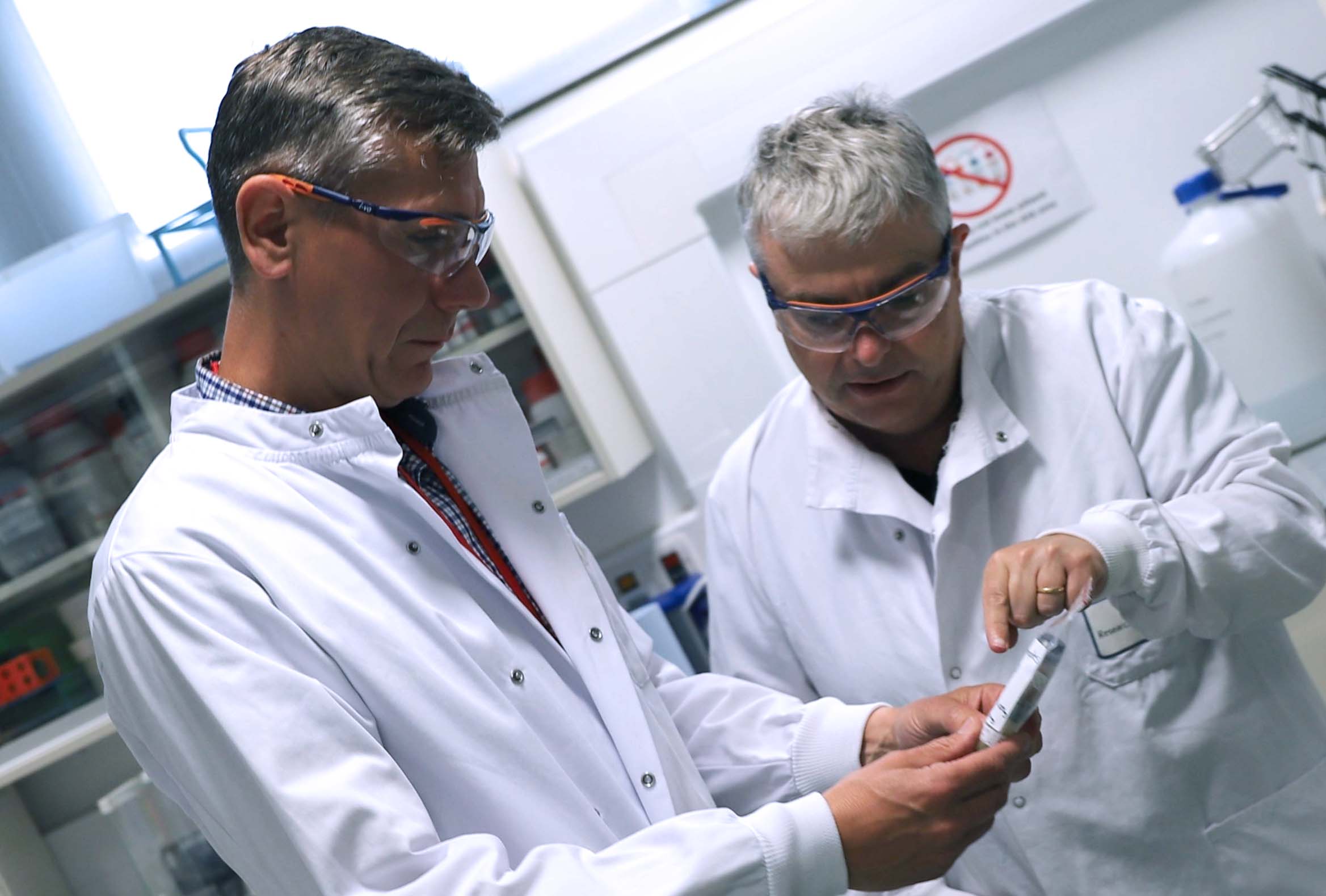
Ian Fairlamb and Jason Lynam in the CLF labs.
Catalysts are crucial in the production of many of the products we rely on a daily basis. Their usefulness spans from plastic production, to pharmaceuticals, to agrichemicals and more, and also offer potential for cleaner production methods.
Once activated, a catalyst will trigger a chain of reactions which ultimately results in the desired end product. A catalytic reaction involves a number of stages and number of chemical formations, and the more efficient is the catalyst, the faster the chain reaction.
In order to better improve and understand catalyst reactions, we need to be able to observe each step in detail. However, the fast-paced reactions such as this are almost impossible to actually observe with conventional equipment.
At the Central laser Facility, we recently collaborated with a team from the University of York’s Jason Lynam and Ian Fairlamb, along with the Orr-Ewing Group from the University of Bristol to tackle this issue.
PhD students Thomas Burden and Jonathan Eastwood setting up an experiment on the LIFEtime equipment at Ultra.
Our Ultra facility houses state-of-the-art Ultrafast Time-Resolved Infrared spectroscopy capabilities. Using Ultra, the team was able to follow the chains of reaction as each chemical formation rapidly formed and reformed into the next chemical formation much like a slow motion movie.
This achievement was recently highlighted in a
Chemistry World news piece, which details the techniques the scientists used to collect their results.
The experiment was part of a wider project to find more readily available metals to make catalysts with, as the current metals used are rare and hard to source. Achieving this would make manufacturing catalysts cheaper, resulting easier access to catalysts for industries.
To read the article, go
here.
To read more about the project with the University of York, go
here. To read more about the project with the University of Bristol, go
here.
